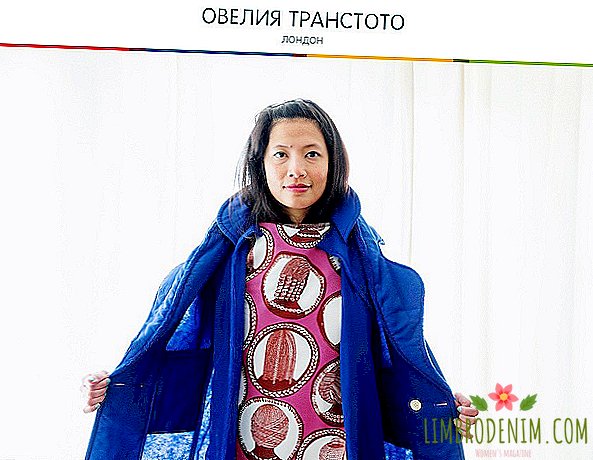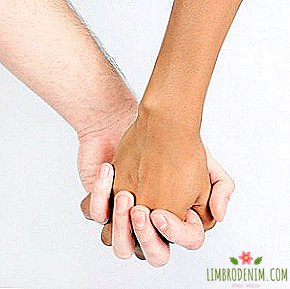With a foreign mother's milk: How the breastfeeding market works
A few years ago on facebook there was a funny story about how a famous actress posted a cry for help on her social media page - she needed breast milk. One of her readers was then a nursing mother and decided to help. She wrote off the actress, she brought the containers, and then the girl put a little milk “off the table” of her son in the freezer for a week. More actress did not appear. Under the post, there was a lively discussion, in which mothers also participated, all infancy feeding children with expressed milk of their friends, and those who first heard that breast milk could be rented.
Text: Lera Shvets Illustrations: Dasha Chertanova

In favor of breastfeeding, a seemingly iron argument - recommendations from the World Health Organization. According to the WHO rules, breastfeeding should be done for at least the first six months and continued for up to two years, combining with another meal. Breast milk does indeed have healing properties and strengthens the baby’s immunity, some babies have an allergic reaction to milk formulas, and one in ten babies is born prematurely - in this case, breast milk just needs a baby to consistently put on weight. However, immediately after birth, it begins to be produced in less than half of mothers of premature babies, and many women cannot breastfeed for medical reasons.
We have written more than once that breastfeeding has long since become a subject of worship from a deliberate choice. Women who, for one reason or another, chose to feed with a mixture, are considered to be “undersized”, they feel guilt and pressure from relatives and friends. Against this background, retail sales of breast milk and the exchange of free donor milk naturally flourish - mainly for those who strongly oppose mixtures, and their own milk is not enough. We decided to sort out the dairy kitchen and find out where and why women get breast milk and whether the safety technique is observed in the process.
Dairy mothers
In the group “Breastmilk, feedgivers, selling, giving, buying” consists of only a thousand people, but new announcements from all over Russia appear here regularly. However, Alfia from Moscow recognizes that the demand for the service of "professional feeding" in Russia is small. She has two children, and she placed different announcements in the group - she offered to be a wet-nurse and looked for a wet-nurse for her eldest son. Both times are not too successful. "In addition, in such groups there is a great danger of running into men who offer to feed them from the chest for money," explains Alfia.
The woman posted a job as a nurse nurse on the Superjobs portal, but nobody responded to her either. "This is a very physiological story and a rather expensive service: not every family can afford to refuse the mixture and pay for the nurse," explains a spokesman for the company. “Once a family from Germany approached me,” says Alfia. “They said that the mother went to work right after the birth, so they needed a nurse for twins. But I had to go with them to Germany with my child. I refused.”
According to Alfiya, Russian wet-winners work mostly for free, through friendship, agreement, or volunteers. For example, after giving birth, when a woman had to be treated with antibiotics, her friend became the temporary breadwinner for her son: “I’m totally against mixtures, I’m a supporter of breastfeeding. And a friend then fed her three-year-old child, but she had little milk. I brought my son to her, and he “dispersed her.” She fed my son for a whole week while I was being treated, and she got much more milk. I, too, didn’t have any problems later. calmly continue to feed him. "
American A 2012 study found that 4% of its 499 participants were milk donors or received milk from a bank or from another woman.
Most of the children, according to Alfia, do not care if their mother does not breastfeed them: “I once had such an incident. I was a volunteer in a children's playroom at the pro-festival festival (my husband and I actively participate in this movement). a ten-month-old baby and forgot him there for the whole day - apparently, she got carried away with the conference. The baby crawled up to everyone and put her hand on her chest. When he crawled up to me and put her hand, I pulled out my chest, and the child sucked me, as if nothing had happened , although I'm not his mom. As a result, I fed child all day. When his mother returned, she thanked me. "
Alfia was a milk mother of three children. One of the families found her in the community of donor breast milk exchange “Dairy Mama”: “The woman had an unsuccessful operation, she was still treated, and the doctors forbade her to breastfeed herself. She was also opposed to mixes. I had too much milk In the end, I fed them baby. "
According to project coordinator Olga Rodicheva, in five years Dairy Mama received more than seven thousand applications from both sides - as a result, already 2500 families became owners of donor milk. Olga decided to create a community when she was looking for donated breast milk for her child. Then many mothers responded, and she decided to make a common platform.
Price is negotiable
"Breast milk, fresh and frozen. For 180 ml - 150 rubles. Fat milk (first child). 500 ml a day I can sell," writes an anonym from Nizhny Novgorod in the thematic group "VKontakte". "I sell breast milk, for 100 ml - 50 rubles. Milk is fat," writes someone from Engels. Slightly lower on the wall is an announcement from Kursk: "The price is negotiable. Milk is stored in the freezer in different quantities. I lead a healthy lifestyle. A child is 5 days old." The creators of relevant sites and publics often position them as a friendly community and an alternative to "commercial" banks with "inflated" prices. At the same time, according to an American study conducted in 2013, almost three-quarters of the samples of donated milk purchased via the Internet were heavily infected with disease-causing bacteria, and the bacteria actively proliferated due to non-sterile collection, improper storage and transportation.
In "Dairy Mom" strongly oppose the sale of milk, but for other reasons. Representatives of the community believe that the Internet can sell fakes - not just donated milk, diluted with water, but also artificial mixtures, as well as cow or goat milk.
In addition, the community fears that relatives may force women to sell milk to the detriment of their health and that of their children. Participants urge to be wary of the health of a female donor, as she may be a representative of “disadvantaged layers where female alcoholism and smoking are common, these substances also penetrate into breast milk, and if it is transmitted as a donor to another child, then the body of the recipient child is poisoned ". In addition, it is the “socially disadvantaged segments of the population” that are one of the risk groups for HIV infection and hepatitis viruses, thus, it is quite likely that the hepatitis viruses and HIV enters the donor breast milk, warns the message on the site.
Finally, in “Dairy Mom” they emphasize that “commercial” milk can be permeated with “negative energy” - due to the fact that mothers think about money during pumping. All participants in the donor exchange are recommended to adhere to the basic principles of safety: an informed choice, a donor mother without complications in health, careful handling of donor milk and home pasteurization of milk before use.

Milk cans
Controlled ways of dairy donation still exist. The European Association of Milk Banks, for example, was founded in 2010: it includes more than two hundred institutions from different European countries. The organization monitors research related to donation of breast milk, and this fall should hold a scientific conference in Italy. In the US, there is Human Milk Banking Association of America (HMBANA) - the North American association of human milk banks, which includes 27 non-profit banks. All participants must comply with international standards - check milk and pasteurize it before transferring it to babies. Most often, the organization transfers milk to babies in the resuscitation of newborns; the ability to transfer milk to mothers in situations where the baby’s life is not threatened (for example, the mother has gone through a mastectomy, she has little milk of her own, or cannot breastfeed for some other reason), she does not. The first dairy bank in Israel opened in the spring, and its leadership also rests on numerous tests of product quality and safety (there are more than 500 dairy banks open in the world).
"Donor points" of collecting breast milk at one time existed in the USSR. “Milk collection was officially authorized by orders of the Ministry of Health,” explains Olga Lukoyanova, a senior researcher at the nutrition laboratory of a healthy and sick child at the National Medical Research Center for Children's Health. “And there is order No. 440 of 1983, which has Maternity hospitals can take breast milk from different women for processing. This phenomenon was very popular in our country. Women brought milk from home. In the maternity hospital or in the perinatal units milk was mixed in one container and paste izovali by the method, which is also described in the regulations. "
But in the 90s, the tradition of collecting donor breast milk in Russia was interrupted: “We learned about such serious diseases as HIV. Everyone became more cautious about the exchange of any bodily fluids. It was during this period that the exchange measures, including breast milk. But since then there has been a huge amount of research that shows that the processing of milk (pasteurization), which is used in our country and authorized by SanPin, completely eliminates the danger of HIV and other known bacteria and pathogenic viruses. "
Study Siblings, one of whom was fed breast milk, and the other - a mixture, showed that there were no differences between them in 10 of the 11 measured parameters
Today in Russia donor milk banks are not officially allowed, but in 2014 the Federal Service for Health and Social Affairs and the Ministry of Health of the Russian Federation gave permission to open a pilot bank in Moscow based on the center where Olga Lukoyanova works. During the first year of operation, the bank collected 148 liters of donated breast milk - fifty-five babies received it. For the time being, only women who are already hospitalized at a research center can become donors - and only children can receive milk. A year later, the second pilot donor breast milk bank opened in the Republican Children's Clinical Hospital in Ufa. Ilona Razdumina, coordinator of the program “Treatment of children” of the charitable foundation for assistance to children and families “Our Children”, says that the deputy chief physician for surgery Rezida Galimov monitored the work of the donor bank in Moscow and made an estimate. "With the money of the benefactors, we bought everything we needed: milk containers, clinical breast pumps, a pharmaceutical refrigerator, a freezer, and a special water bath for pasteurization," lists Ruddumin. As in Moscow, a donor breast milk bank in Ufa can be used only by women and children already hospitalized in the center. "Nursing mothers wrote to me with questions about whether they can give away their excess milk,” Ilona continues. “But we cannot check this milk, checking is additional resources. For now, we are only at the first stage.”
Safety engineering
Official medicine in most cases gives preference to breast milk, bearing in mind that the use of the mixture has its own costs. "The mixture is not made on the basis of human protein, which is contained in breast milk, but on the basis of cow, goat or soy protein with varying degrees of processing," explains Yekaterina Lokshina, breastfeeding consultant for IBCLC. - Children can be intolerant of certain types of mixture "They may not take on any kind. There are mixtures with hydrolyzed protein, but they have a very unpleasant taste - so they contain more carbohydrates due to sweeteners, more salt, and so on."
At the same time, the doctor should endure the verdict whether the child is intolerant of the mixture: sometimes it is enough to try another — hypoallergenic — milk replacer (experts indicate that there are no conditions under which the baby is breast milk). And certainly it is not worth risking the health of the child for the sake of milk, the quality of which cannot be verified.
“Just as we use donor blood, donor organs, we can also use donor milk,” says Ekaterina Lokshina. “But there are certainly risks — and the recipient takes them.” First, the expert explains, a donor woman may have diseases whose symptoms have not yet manifested. Secondly, she could take any medications or other substances that penetrate the milk. Thirdly, there is a problem of external pollution related to how milk was collected and transported. But if you carefully select a donor and agree in detail on the collection and transfer of milk, this could be an alternative to feeding, Lokshina is sure.
Olga Lukoyanova advises women who are going to take donated milk from friends or through online communities to familiarize themselves with the donor’s medical history. For example, it is important to know whether the donor is ill with tuberculosis and if he is a carrier of hepatitis B and C viruses, to clarify the results of tests for syphilis and HIV: "Now all women have these tests on their hands when they enter the maternity hospital," Olga. “But afterwards, the milk still needs to be processed in a special way. The pasteurization method is described in open sources and is easy to implement at home.
Of course, the decision how to feed the baby is always left to the parents. But it is worth remembering that the peace and comfort of the mother can be much more important for the child than endless throwing in search of milk. WHO's recommendations on breastfeeding are designed primarily for countries where there are problems with access to clean drinking water and there is a high risk of infant mortality from diarrhea, pneumonia and malnutrition - in this case, mother's breast milk is indeed much more beneficial for the child and more comfortable for parents. than its alternatives. But in other situations, when the baby grows in sanitary conditions, parents have access to clean water and high-quality mixture, there is nothing wrong with abandoning breast milk - research shows that for all but it is only slightly better than the mixture.
In the latest episode of the series "Crazy Ex-Girlfriend," one of the characters - "single father" - in a constant panic from the fact that his daughter is deprived of mother's milk. He spends a lot of time and effort to obtain donor milk in various ways and deliver it to his daughter without defrosting, simultaneously worrying that he misses important moments in a child's life. In the final, the hero comes to the conclusion that milk is not the only thing he can give to his daughter, and certainly not milk makes him a good parent.





